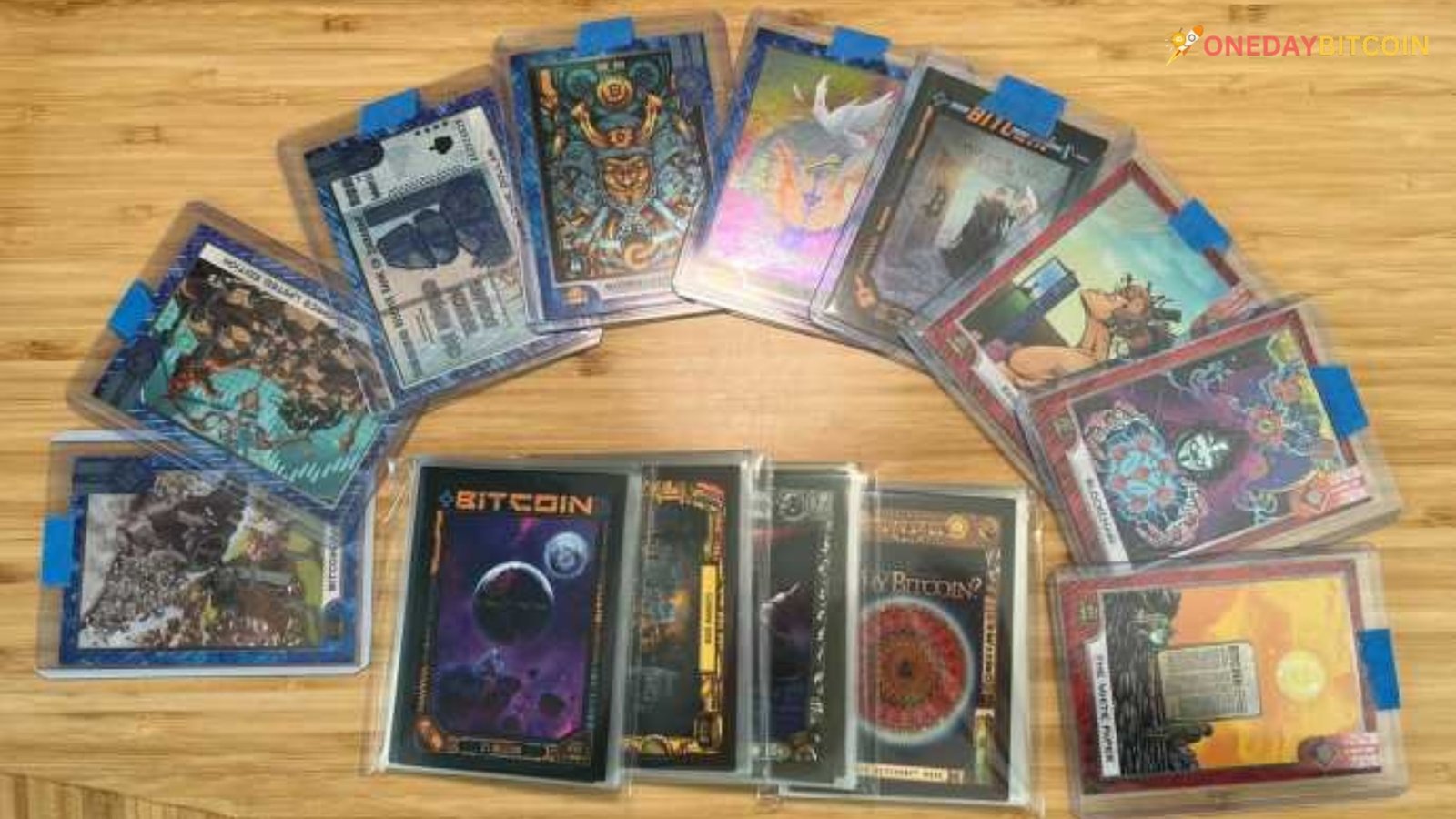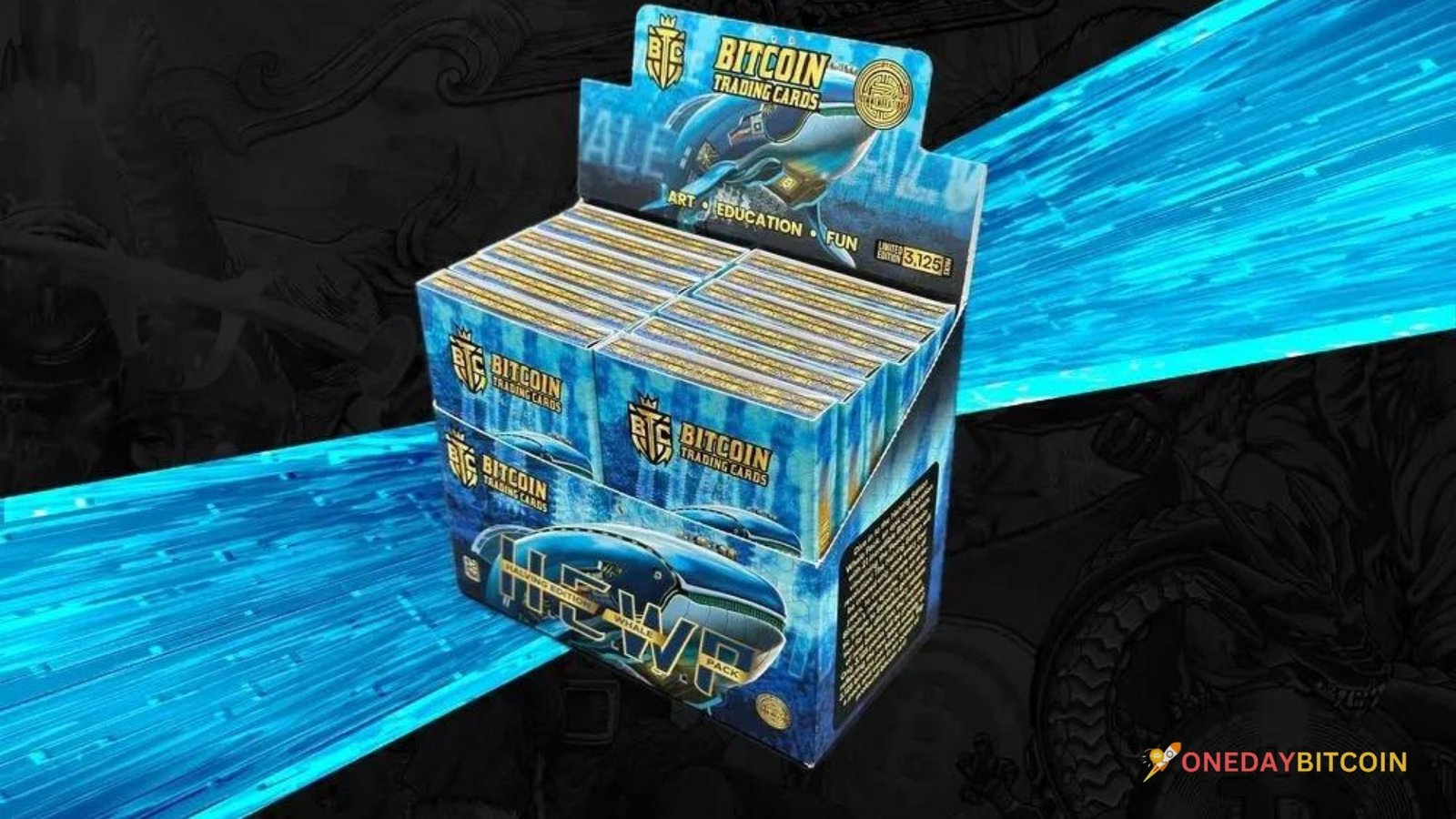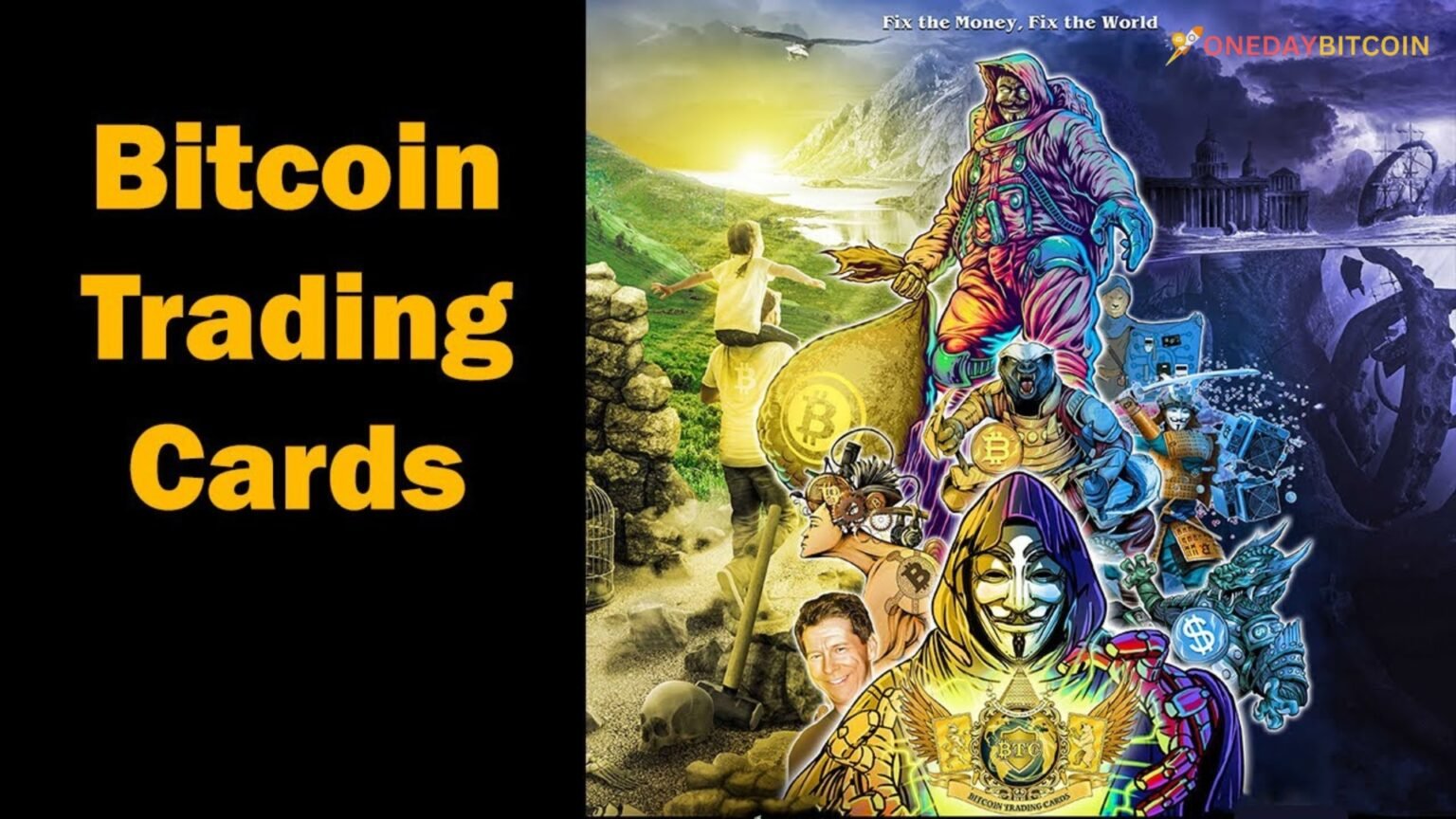Bitcoin Trading Cards The world of collectibles has witnessed many evolutions, from traditional baseball cards to digital assets like NFTs. Now, a new hybrid form is capturing the attention of enthusiasts: Bitcoin trading cards. Combining the nostalgic appeal of physical collectibles with the cutting-edge world of cryptocurrency. Bitcoin trading cards represent a fascinating intersection of technology, finance, and pop culture.
What Are Bitcoin Trading Cards?
Bitcoin trading cards are physical cards that represent various aspects. The Bitcoin ecosystem, from its history and key figures to unique cryptographic puzzles. These cards often feature high-quality artwork, QR codes linked to digital assets, and even small amounts. Bitcoin or other cryptocurrencies embedded in them. They serve both as a tangible representation of the digital world and as a potential investment, depending on the rarity and content of the card.
The Inspiration Behind Bitcoin Trading Cards
The idea of Bitcoin trading cards draws inspiration from several sources. First, there’s the traditional trading card market, which has seen a resurgence in recent years, particularly during the pandemic. Collectors of all ages have rekindled their love for sports cards, Pokémon cards, and other collectibles, creating a thriving market for rare and unique items.
Second, the rise of cryptocurrencies and blockchain technology has introduced new ways to tokenize assets, creating a transparent, secure, and immutable digital layer of ownership. NFTs, or non-fungible tokens, have become a popular method for trading digital art, music, and other assets, but many collectors still yearn for something physical that they can hold, trade, and display. Bitcoin trading cards bridge these two worlds, offering a physical collectible with a digital twist. They appeal to both traditional collectors and tech-savvy individuals who are intrigued by cryptocurrency’s potential.
Types of Bitcoin Trading Cards
There are various types of Bitcoin trading cards, each with its unique features and appeal:
Historical Cards
These cards commemorate significant events in Bitcoin’s history, such as the creation of the first block, the infamous Mt. Gox hack, or the first real-world Bitcoin transaction (the famous pizza purchase). They often include detailed information about the event and artwork that captures the moment’s essence.
Key Figures
Some cards feature prominent figures in the Bitcoin community, such as Satoshi Nakamoto (the pseudonymous creator of Bitcoin), early adopters, developers, or influential advocates. These cards may include biographical information, quotes, or even QR codes that link to the individual’s contributions to the Bitcoin ecosystem.
Puzzle Cards
Puzzle cards are a unique and interactive subset of Bitcoin trading cards. These cards contain cryptographic puzzles or challenges that, when solved, can unlock a prize, such as a small amount of Bitcoin. These puzzles can range from simple riddles to complex mathematical difficulties, appealing to casual collectors and hardcore cryptography enthusiasts.
Artistic Cards
Many Bitcoin trading cards are designed as art pieces, with intricate designs, limited editions, and high-quality printing. Well-known artists often produce these cards in the crypto community, and collectors can highly seek them.
Commemorative Cards
These cards are created to celebrate milestones in cryptocurrency, such as Bitcoin reaching a new all-time high, significant technological advancements, or major regulatory changes. They serve as a record of the ongoing evolution of the crypto space.
The Market for Bitcoin Trading Cards
The market for Bitcoin trading cards is still in its early stages but is growing rapidly. Collectors and investors are drawn to the unique combination of physical and digital assets. Some cards, including rare artwork, significant historical references, or embedded Bitcoin, are sold for thousands of dollars.
Online marketplaces, auction sites, and dedicated platforms have emerged to facilitate these cards’ buying, selling, and trading. Just like in traditional trading card markets, rarity, condition, and provenance play significant roles in determining the value of a Bitcoin trading card. Cards that are part of limited-edition runs or feature work from well-known artists are especially prized.
Additionally, the community aspect of Bitcoin trading cards cannot be understated. Collectors often gather in online forums, social media groups, and events to trade cards, share stories, and discuss the latest developments in cryptocurrency. This sense of community helps to drive interest and engagement, further fueling the market.
Investment Potential
While the primary appeal of Bitcoin trading cards may be their collectibility and aesthetic value, they also hold potential as an investment. Like other collectibles, the value of these cards can be appreciated over time, especially as the popularity of cryptocurrency continues to grow. However, the market is still relatively niche, and investing in Bitcoin trading cards carries risks similar to other speculative assets.
Investors interested in Bitcoin trading cards should approach the market with the same caution as any other form of investment. It’s essential to thoroughly research, understand the factors influencing card values, and know market trends. As with any collectible, the condition of the card, its rarity, and its provenance are key considerations.
The Future of Bitcoin Trading Cards
The future of Bitcoin trading cards looks promising, with several potential developments on the horizon. As blockchain technology evolves, we may see more sophisticated ways of linking physical cards to digital assets, enhancing their value and functionality. For example, cards could be related to NFTs, allowing collectors to own a physical and digital version.
Moreover, as the cryptocurrency market matures, Bitcoin trading cards could become a recognized asset class within the broader world of collectibles. This would likely attract more mainstream interest, driving up demand and potentially leading to more significant innovation in the design and production of these cards.
Conclusion
Bitcoin trading cards represent a unique blend of the old and the new, merging. The tangible world of physical collectibles with the innovative realm of cryptocurrency. Whether you’re a seasoned collector, a crypto enthusiast, or an investor looking for the next big thing. These cards offer something for everyone as the market grows and evolves. Bitcoin trading cards could become a staple in modern collectibles. They are marking a new chapter in the history of trading cards and digital assets.


